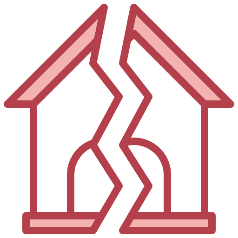
Website: intellectual work protected by copyright?
Within the framework of its activity, a company is often led to publish a website in order to present its services online. When certain conditions are met, this website is likely to be protected by copyright.
Do you want to protect your website and avoid your competitors from appropriating your intellectual creation? The lawyers at Goldwin Law Firm explain how to protect your website.
First of all, your website must be an intellectual work as defined by the French Intellectual Property Code (A). Then, it is necessary to characterize the original character of your website (B).
A. The application of the notion of intellectual work to the notion of website
Although there is no definition of intellectual work in the Intellectual Property Code, article L.111-1 paragraph 1 of this Code states that :
“The author of a work of the mind enjoys an exclusive intangible property right on this work, due to the sole fact of its creation, which is enforceable against all.”
In his capacity as holder of an exclusive intangible property right that can be used against all, the author of a work of the mind can oppose the reproduction, representation or disclosure of his work.
But what are the intellectual creations that are included in the notion of intellectual work?
The nature of the works included in this list is very varied. Thus, a book, a software or a speech are intellectual works according to the French Intellectual Property Code.
A fortiori, a website is likely to be considered as an intellectual work within the meaning of the Intellectual Property Code. On the other hand, in order for a website to be considered as a work of the mind within the meaning of the Intellectual Property Code, it must be marked by the intellectual contribution of its author.
In other words, for a website to benefit from copyright protection, it must reflect the personality of its author.
B. The application of the notion of originality to that of a website
The jurisprudence has come to specify what are the criteria for a website to be considered as a work protectable by copyright.
Therefore, for an intellectual creation to be considered as a work of the mind, this creation must be original. In other words, it must reflect the personality of its author, which is the case if the author was able to express his creative abilities during the creation of the work.
However, the courts are often reluctant to recognize that a website has an original character.
In a decision rendered on June 4, 2015, the Marseille Court of First Instance ruled that a website is an intellectual work and that, as a result, the publisher of this website was entitled to take action for infringement against a competitor who had used the visuals of the website without any authorization from him.
However, the Paris Court of First Instance refused to grant copyright protection to a website because the elements brought in support of such an allegation were insufficient to demonstrate the original character of the website. More specifically, the judges noted that:
“The choice of the colors black, red and gray is not the result of an aesthetic research and a personalized effort, especially since the use of the colors red and black because of the contrast created by the association of opposite colors is commonplace.”
It follows that a website is likely to benefit from copyright protection provided that its publisher manages to establish its original character. This is what has been judged by the Courts of Appeal of Paris and Rennes.
However, to achieve such a result, the creator of the website must choose a mode of expression that is specific to him and which is, therefore, necessarily distinct from the choice that another author would have made.
For more details concerning the application of copyright to the website you have published in the course of your business, you can contact our team of lawyers.






